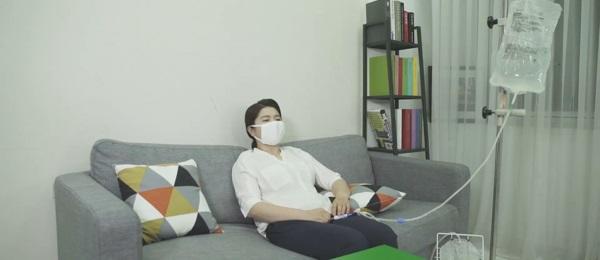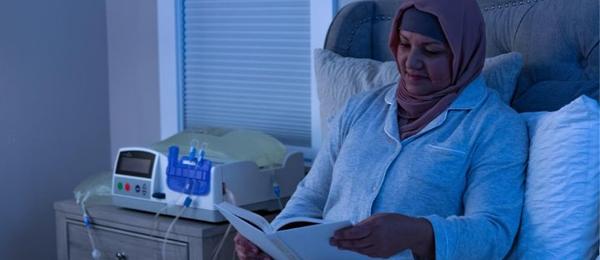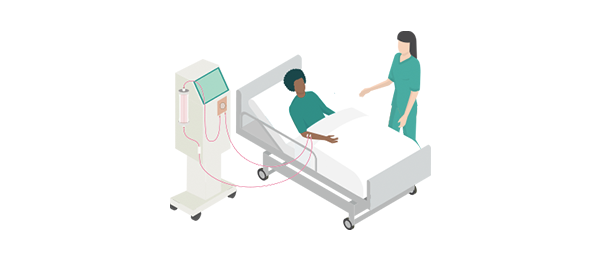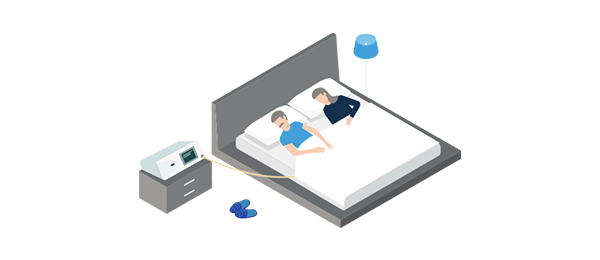Peritoneal Dialysis (PD) at Home
If you are starting dialysis, peritoneal dialysis (PD) may be one of the treatment options available. Learn more about peritoneal dialysis (PD) at home.
What is Peritoneal Dialysis (PD)?
Peritoneal dialysis (PD) is a treatment that uses the lining of your abdomen – called the peritoneal membrane – to remove waste products from your blood. It is usually done at home and can even be carried out while sleeping or travelling. It might be the right therapy for you if you value mobility or a flexible treatment schedule.

How is Peritoneal Dialysis (PD) performed?
During peritoneal dialysis (PD), a fluid called dialysis solution (or dialysate) enters your abdomen through a catheter. This catheter is inserted into your abdomen in a simple surgical procedure prior to starting PD. Once the dialysis fluid has flowed into your abdomen, it stays there, filtering your blood by absorbing any waste and excess fluid. After 6 to 8 hours, the dialysis solution containing the waste and excess fluid from your body is drained out of your abdomen through your catheter. This entire is called an exchange.
APD VS CAPD
There are two types of peritoneal dialysis (PD): continuous ambulatory peritoneal dialysis (CAPD) and automated peritoneal dialysis (APD).

Continuous Ambulatory Peritoneal Dialysis (CAPD)
CAPD is a treatment that uses gravity to fill and drain dialysis solution from your abdomen.
CAPD exchanges are usually done 3 to 4 times a day, mainly upon waking, before lunch and dinner, and at bedtime. During a CAPD exchange, dialysate replacement is performed manually by you or your caregiver during the day. During each replacement, it may take up to 30 minutes to drain the used dialysis solution from the abdomen and fill the abdomen with a new bag of fresh dialysis solution. The patient can then resume regular daily activities until the next exchange.

Automated Peritoneal Dialysis (APD)
APD requires a machine to deliver the dialysis fluid into the abdomen.
APD usually takes place at night when a machine is connected to your PD catheter. While you are sleeping, the machine drains used dialysis solution and supplies clean dialysis solution. You can then disconnect from the equipment when you wake up and resume normal activities.
What are the benefits of Peritoneal Dialysis (PD)?
PD is a needle-free dialysis option
PD uses a catheter to introduce dialysis solution into a space in your abdomen to filter your blood through the peritoneal membrane. Haemodialysis (HD), on the other hand, filters your blood through an external machine, which requires needles to direct your blood into the machine.
PD at home offers flexibility and independence
Doing peritoneal dialysis (PD) at home increases the flexibility and independence of your life on dialysis. It can save you frequent trips to the hospital or clinic and gives you more freedom to work or do the activities you enjoy.
You can travel with PD
For many chronic kidney disease (CKD) patients, remaining mobile and being able to travel is an important part of maintaining independence. As PD can be done overnight at any place of your choice, it is possible for most dialysis patients to travel and continue their treatment while being away from home. While planning for your trip, you can discuss with your clinician to make the necessary arrangements for PD during your trip.
Frequently Asked Questions
Where to go next?

Continuous Ambulatory Peritoneal Dialysis (CAPD)
CAPD can be performed at work, home or during travel.

In-Centre Haemodialysis (In-Centre HD)
You may prefer to receive dialysis at a hospital or treatment centre near you with ICHD.

